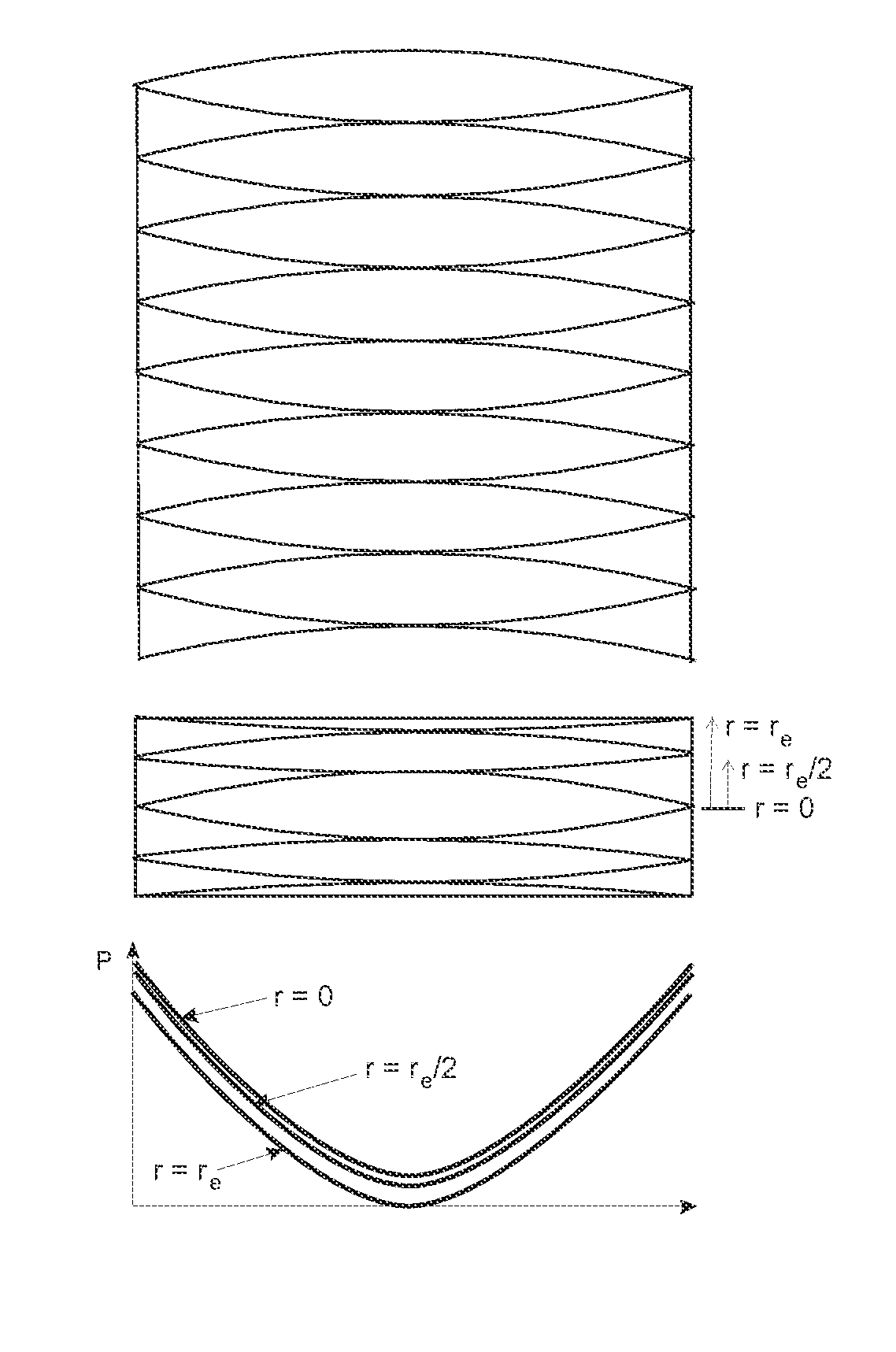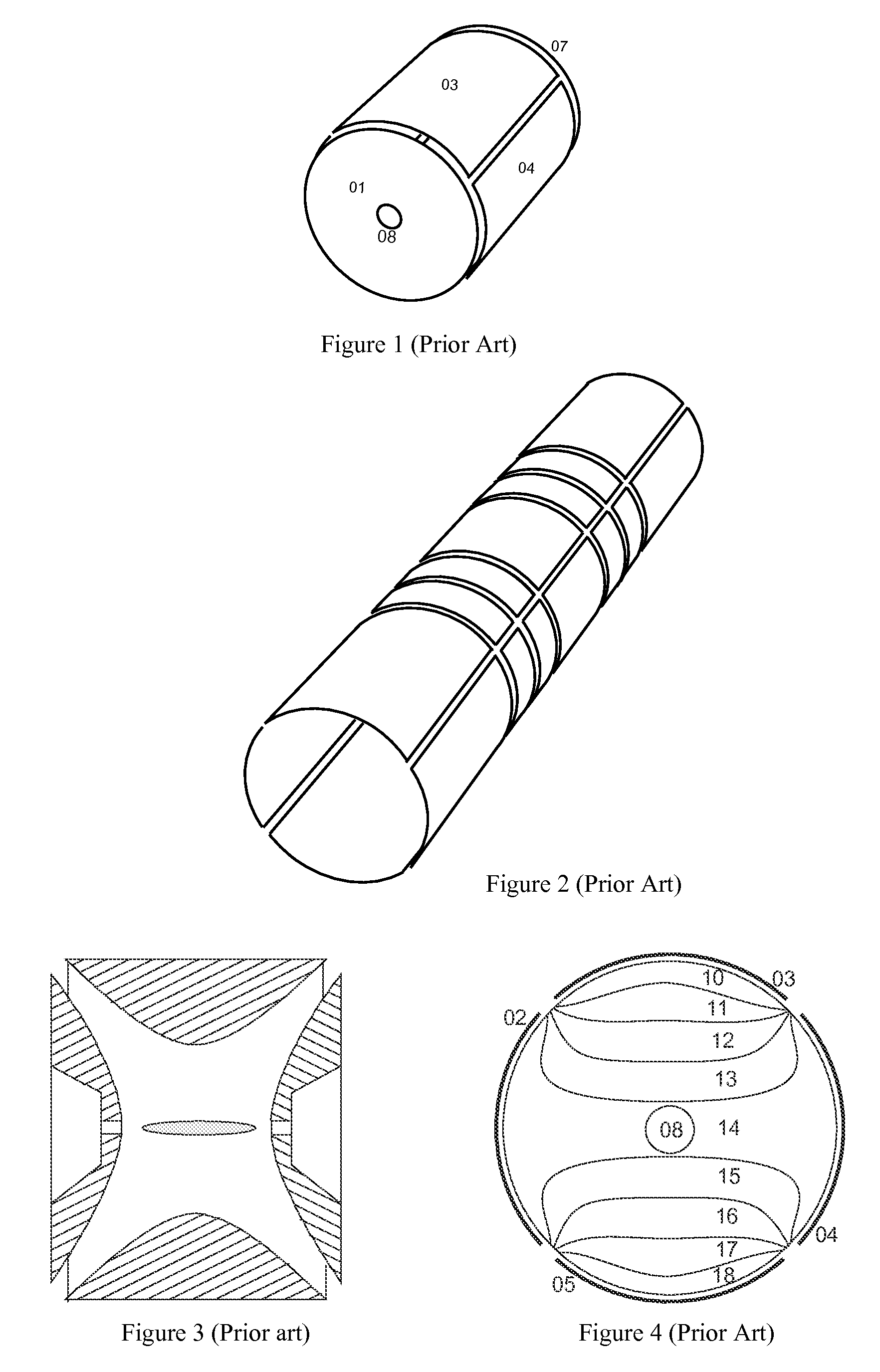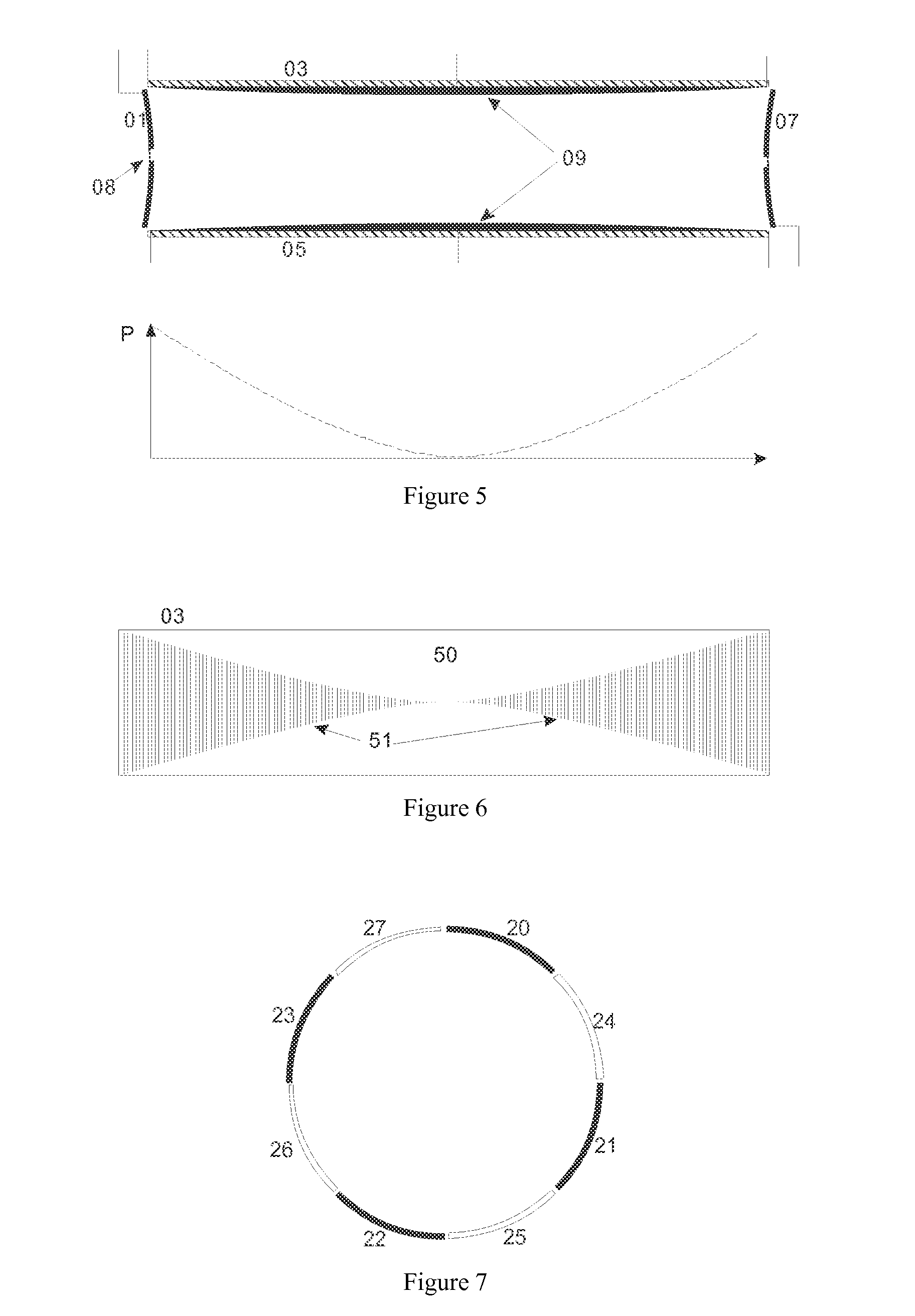Ion cyclotron resonance measuring cells with harmonic trapping potential
a technology of harmonic trapping potential and cyclotron resonance, which is applied in the field of mass spectra acquisition, can solve the problems of complex potential distribution in the interior of the cell, and achieve the effect of improving the accuracy of the measurement and accuracy of the measuremen
- Summary
- Abstract
- Description
- Claims
- Application Information
AI Technical Summary
Benefits of technology
Problems solved by technology
Method used
Image
Examples
first embodiment
[0046]FIG. 5 exhibits schematically in the upper part, how the longitudinal sheath electrodes (03) and (05) of the ICR cell are covered with layers (09) of a resistive material. The resistances of the layers change from zero resistance in the center to high resistance at the ends; the resistance profile is symbolically indicated by a variation of the thicknesses of the layers (09). The endcap electrodes (01) and (07) are formed as rotational hyperboles, with apertures (08) to introduce the ions. The lower part of this Figure presents the parabolic potential profile P generated by a suitably applied trapping voltage along such a longitudinal electrode.
[0047]FIG. 6 shows a resistive layer (50) on electrode (03) trimmed by narrow laser cuts (51) into the wanted resistance profile.
second embodiment
[0048]FIG. 7 presents a cross section through an ICR cell according to this invention, composed by a mixture of four longitudinal electrodes with resistance layers (20) to (23) with four well conducting metal electrodes (24) to (27), the latter serving for image current detection. This ICR cell encloses a complicated potential distribution which is harmonic only on the average for orbiting ions.
third embodiment
[0049]FIG. 8 depicts a most preferred third embodiment of a cylindrical ICR measuring cell with longitudinal electrodes changing in width, not requiring any resistance layer. The sheath electrodes of the cylindrical measuring cell are divided by separating gaps with parabolic shape into eight digon-shaped and sixteen triangular sheath electrodes, each with curved sites. Geometrically, a “digon” is a surface section with two corners, in most cases defined on non-planar surfaces, but here used in combination with curved sites also for plane or cylindrical surfaces. The cylindrical cell is closed at both ends by endcap electrodes (01) which have a rotationally hyperbolic form. Apertures (08) allow for the introduction of ions in the central axis along the magnetic field lines. A single trapping voltage on the triangular sheath electrodes and on the endcaps generates the desired potential distribution in the interior, said potential distribution having a parabolic profile in the axial d...
PUM
 Login to View More
Login to View More Abstract
Description
Claims
Application Information
 Login to View More
Login to View More - R&D
- Intellectual Property
- Life Sciences
- Materials
- Tech Scout
- Unparalleled Data Quality
- Higher Quality Content
- 60% Fewer Hallucinations
Browse by: Latest US Patents, China's latest patents, Technical Efficacy Thesaurus, Application Domain, Technology Topic, Popular Technical Reports.
© 2025 PatSnap. All rights reserved.Legal|Privacy policy|Modern Slavery Act Transparency Statement|Sitemap|About US| Contact US: help@patsnap.com



